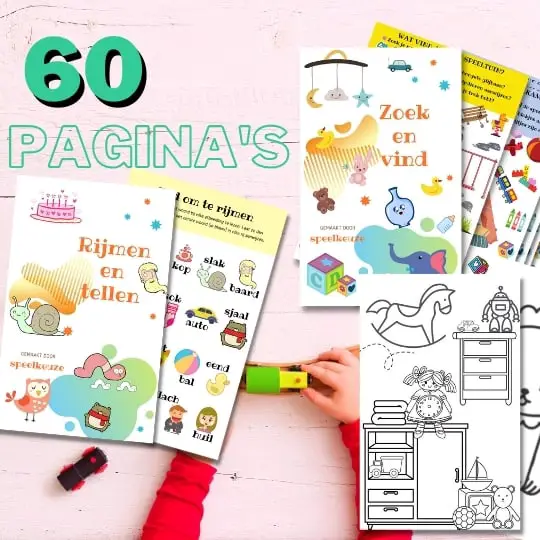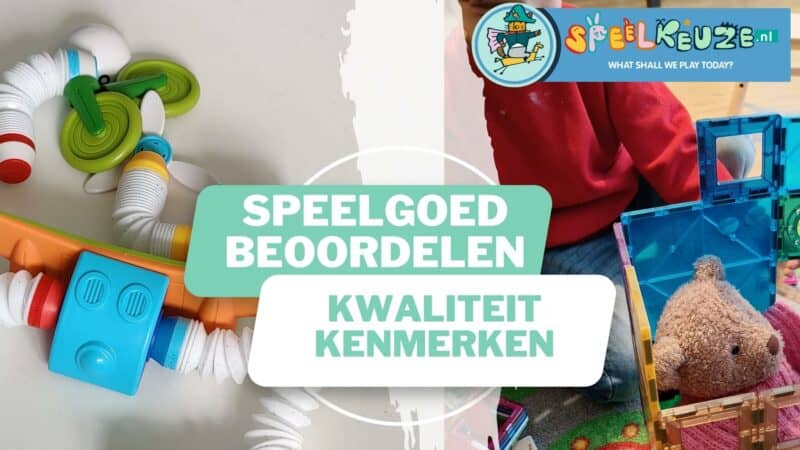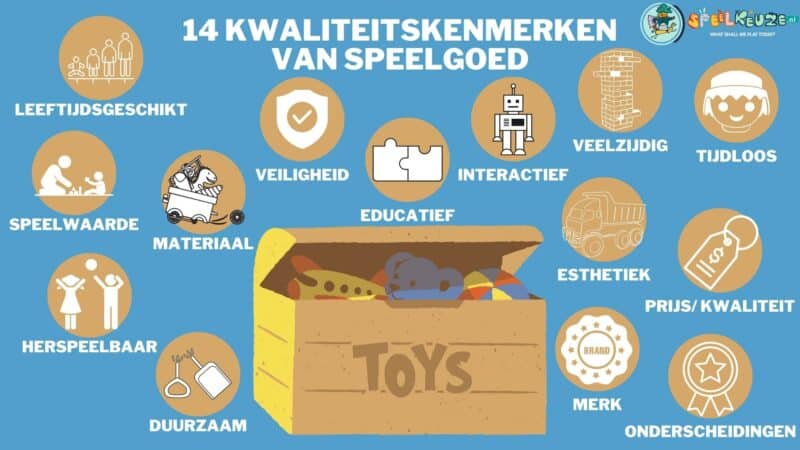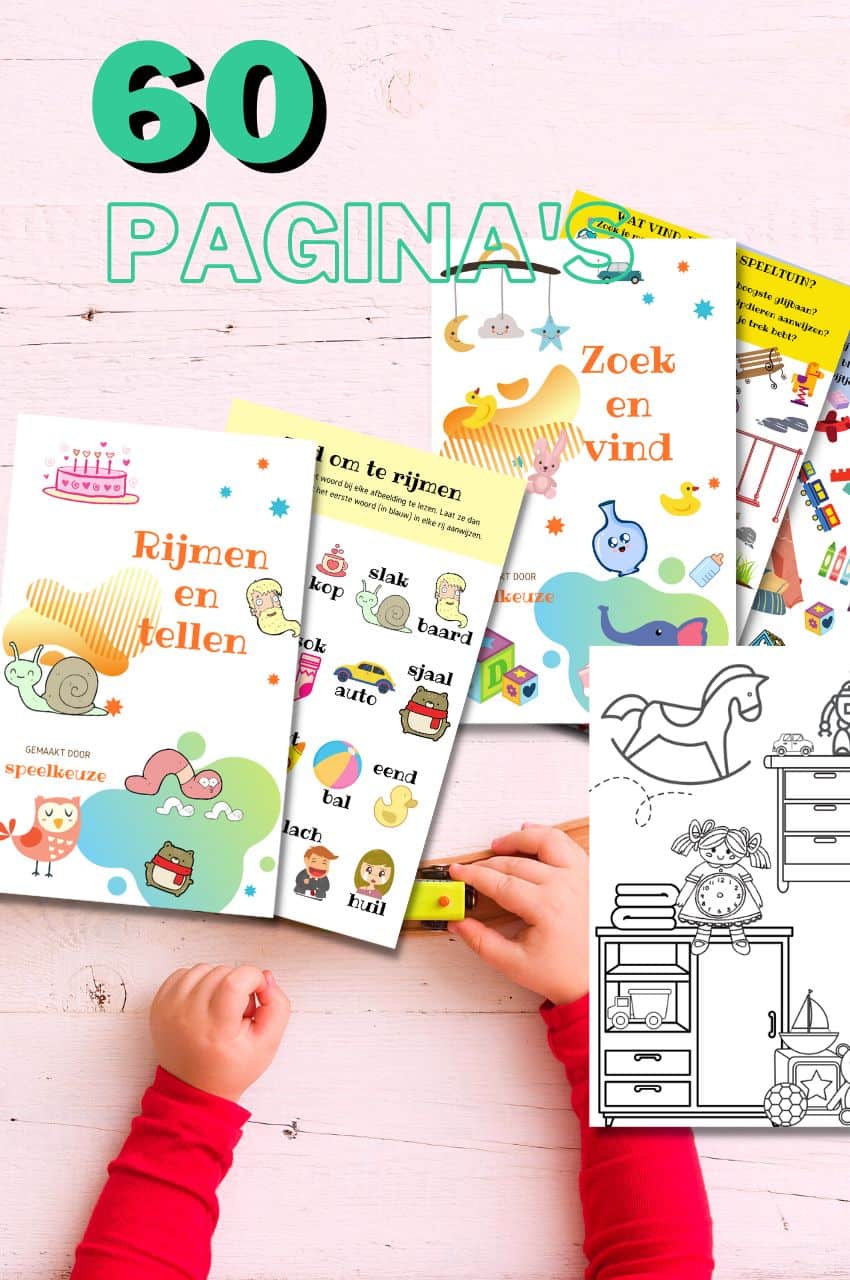14 Traits Every Well Made Toy Should Have To Be High Quality

Always something to do for the holidays or rainy day?
Play Choice now has the ultimate activity book collection, with over 60 pages of fun coloring pages and educational puzzles.

Quality is a distinctive mark that distinguishes and is typical for a certain person, object or thing. Quality is essential in toys, with age appropriateness being the most important feature.
Other features include play value, replayability, durability, props, safety, educational value, interactivity, versatility, timeless appeal, aesthetics, value for money, awards and brand reputation.
These aspects are often interrelated, as shown by a study by Thangthong, Louhapensang and Suttiwan (2019). It emphasizes that development, playing methods and safety are closely related in quality toys for children aged 0-3 years.
Play value is the extent to which toys attract children's play and keep them involved, and aesthetics and versatility play a major role here. Sustainability contributes to the lifespan and functionality of toys and sustainable ones props, such as wood or sturdy plastics contribute to this. Materials also influence safety, educational value and environmental friendliness. Wooden toys and bioplastics are sustainable and environmentally friendly, while PVC and lead contain dangerous chemical additives.
The product description alone is not enough to judge the quality of a toy. Simple and effective toy items are often better for choosing developmentally appropriate toys.


From toddler to toddler activity book collection
Educational games and coloring pages for 3 to 6 years
Your toddler and preschooler will love this e-book, along with the accompanying printables. He or she can play with it at every stage of development, together with mom and dad.
Buy at Bol.comWhat we discuss in this comprehensive post:
- 1 #1 Age appropriateness
- 2 #2 Play value
- 3 #3 Replayability
- 4 #4 Durability
- 5 #5 Materials
- 6 #6 Safety
- 7 #7 Educational value
- 8 #8 Interactivity
- 9 #9 Versatility
- 10 #10 Ageless appeal
- 11 #11 Aesthetics
- 12 #12 Value for money
- 13 #13 Awards
- 14 #14 Brand reputation
- 15 Can you get all of the information you need to buy from the toy's description?
#1 Age appropriateness
Age appropriateness is matching toys to a child's age, interests and abilities to ensure safety and learning experiences.
Age appropriateness is the most important quality factor of a toy as it promotes a child's physical, cognitive, social and emotional development while also ensuring safety by avoiding choking hazards in young children.
Good examples are rattles and activity boards for babies, tricycles, and toy musical instruments for 3-year-olds. These toy items stimulate development and are tailored to the age and interests of the child. Bad examples are toys with small parts, marbles, small balls and coins, or toys with unsafe batteries. These items may be a choking hazard and are not suitable for young children.
When looking for age-appropriate toys, it is important to pay attention to the age guidelines of agencies such as the US Consumer Product Safety Commission and the Toy Safety Directive 2009/48/EC in Europe and to choose educational toys that promote problem-solving, spatial awareness and social skills. promotes.
#2 Play value
Play value is the degree to which a toy or game attracts and engages children. Play value is an important quality factor of toys because it contributes to the development of children, parent-child interaction and long-lasting fun.
Good examples of high play value toys are building blocks, role play toys and clay. These stimulate creativity, curiosity and offer various play options. Bad examples are physical toys such as action figures linked to violent TV shows or movies, as they offer limited play opportunities and can negatively impact children.
According to the study by Yi-he Li, Min-yuan Ma and Wei-chen Li, it is important that toys can be used in different ways. Toys with multiple play options have a higher play value and keeps children interested for longer and contributes to their development.
#3 Replayability
Replayability is the ability of a game or toy to continue to be interesting and engaging to the user over and over again. It's important because it increases play value and provides long-lasting fun, contributing to skill development and social interaction.
Good examples of replayability are classic board games such as Monopoly and Risk, which appeal to players of different ages. Toys that adapt to the age and stage of development, such as building blocks and stuffed animals, also have a high level of replayability. Think of the teddy bear that is picked up again and again and accompanies a child in its growth and development.
Bad examples are electronic games and toys that get bored quickly or offer only one play activity. These cannot replace traditional play activities such as drawing, pretend play and building, but they can complement the fun.
When looking for toys with good replayability, it's important to pay attention to age, developmental possibilities and the possibility to combine the toy with other play activities. An example of this is the marble track, which offers endless building possibilities.
#4 Durability
Durability is the ability of an object to withstand wear, pressure and damage. Durability is important because it contributes to the longevity and functionality of products, such as toys, which is especially important for a sustainable future in today's times.
Good examples of durable toys are toys made of thick plastics, sturdy metals and reinforced stitching, designed for children of different ages. Bad examples are cheap, fragile toys that break easily and need to be replaced.
When choosing toys that meet this quality requirement, pay attention to craftsmanship, choice of materials and age suitability. Look for high-quality toys made from durable props and designed for the right age group.
#5 Materials
Materials are everything that shapes and determines toys. They influence sustainability, safety, educational value and environmental friendliness. Examples include wood, plastic, bioplastic, polyvinyl chloride (PVC), textiles, felt, metal, lead, plush, rubber, paper, cardboard and resin.
Materials are important for toys because they offer more than just durability, such as sensory experiences. Good examples are wooden toys (sustainable, environmentally friendly, educational) and bioplastic (sustainable alternative to conventional plastic, but with disadvantages such as competition with food sources). Bad examples are PVC (tough, flexible, but contains dangerous chemical additives) and lead (toxic, heavy, harmful to children).
When choosing toys, it's important to pay attention to material properties. Most toys are made of plastic, but alternatives are often better. Textiles such as cotton and wool are durable and offer a rich sensory experience. Felt is durable, lightweight and rough, but less suitable for clothing. Metal is strong and durable, but heavy and can have sharp edges.
The best material choice for toys is often wood, due to durability, environmental friendliness and educational value.
#6 Safety
Safety is ensuring the health and well-being of children while playing with toys. Safety is one of the most important issues, as it ensures an enjoyable and worry-free playing experience for children and peace of mind for parents.
Good examples of safe toys are toys without small parts, sharp edges or dangerous ones props.
Bad examples are toys with loose parts, sharp points or toxic substances. When choosing toys, one should pay attention to sturdy construction, safe props and the correct age indication.
According to Abraham et al. (2015), the number and frequency of toy-related injuries in children have increased, especially with ride-on toys. In the EU, the “Toy Safety Directive 2009/48/EC” applies to toy safety, which covers general and specific risks. In the US, toy manufacturers must comply with the rules of the US Consumer Product Safety Commission and the ASTM F963-17 standard.
Om safe toys, you choose high-quality toys that will last for years. Avoid dangerous or poorly constructed toys that could cause injuries such as choking or strangulation. Pay attention to sturdy seams, safe edges and washability. Avoid loose ribbons or cords and toys with small stuffing that can cause suffocation.
Check that toys are unbreakable, resistant to chewing and do not contain small parts that could become detached. Choose age-appropriate toys, pay attention to noise levels, and avoid sharp points or dangerous edges.
#7 Educational value
Educational value is the ability of toys and activities to help children learn and develop in various areas such as logic, problem solving, communication, motor skills and creativity. Educational value is important because it's more than just sustainability; it also includes sensory experiences and other aspects that contribute to the child's overall development.
Good examples of educational toys include science sets, musical instruments, electronic learning tools, reading and writing materials, construction sets, and board games. These stimulate creativity, problem solving and social interaction, among other things.
Bad examples are toys with bright lights and loud noises, toys that focus on memorization rather than problem solving, and toys that don't match the child's interests.
When choosing toys with high educational value, it is important to look for toys that suit the age and development level of the child, offer challenges and gradually introduce new skills.
According to a study by Önder, M. (2018), “Contribution of Plays and Toys to Children's Value Education” in the Journal of Education and Training, introducing toys and games that play an important role in childhood education and using them more effectively in values and morals education is of crucial importance.
Children understand the real world through play and develop language and conceptual skills. They try out different social roles and learn self-regulation and rule-making and compliance.
#8 Interactivity
Interactivity is the ability of a toy to respond to the child's actions and input, provide feedback and engage in dialogue. Interactive toys promote engagement, problem solving and social skills. Interactivity is important because it contributes to children's learning and development processes.
Good one examples of interactive toys are smart toys, robotic toys and augmented reality toys.
Bad examples are connected toys with privacy concerns and toys aimed at memorization.
When choosing toys, it's important to pay attention to the quality of interactivity. Ihamäki and Heljakka (2018) conducted a study with 20 pre-schoolers aged 5-6 years showing that creative play with character toys is important for development even more than educational potential.
#9 Versatility
Versatility is the ability of toys to stimulate creativity and imagination by providing multiple play opportunities. Versatility is important for toys because it's not only about durability, but also about sensory experiences and other aspects.
Good examples of versatile toys are building blocks, dolls and play kitchens. These stimulate problem-solving thinking, spatial awareness, social skills and creativity. Bad examples are toys with bright lights and loud noises, which can be overstimulating and hinder concentration and learning.
When looking for versatile toys, it's important to look for combination options with other toys, open-ended play and simple storage solutions. In this way, creativity, imagination and development are optimally stimulated.
#10 Ageless appeal
Ageless appeal is the ability of toys to engage and entertain children of different ages and developmental levels. Ageless appeal is important for toys because they offer versatility and multiple play options, helping to develop creativity and critical thinking.
Good examples of ageless toys are magnetic building sets, chessboards, microscopes, musical instruments and play clay. Bad examples are ephemeral trends and cheap, easily broken items.
When choosing toys with timeless appeal, it is important to look for open-ended possibilities, stimulation of creativity and critical thinking, and durable, sensorially appealing props.
#11 Aesthetics
Aesthetics are important for toys for sensory experience, intrinsic attractiveness and developmental benefits. Materials are not only for sustainability, but also about how they contribute to the child's overall experience and enjoyment.
Good examples are natural toys props such as wood, which provide tactile sensory experiences and help develop fine motor skills and creativity. Bad examples are toys with limited appeal, few creative possibilities and low quality.
When choosing toys, it is important to pay attention to aesthetic aspects such as color, shape and... material. Fulcher and Hayes (2018) showed that color and type of toys influence how children interact and play with them, such as with LEGO® sets.
#12 Value for money
Value for money concerns the relationship between cost and quality of a product or service. It's about choosing the most cost-effective option when purchasing, based on the best combination of quality and price.
Value for money is important for toys because it's not just about cost.
Good examples are toys that stimulate the imagination, increase concentration and are safe.
Bad examples are expensive toys with limited play options or unsafe ones props.
When choosing toys for children, it's important to pay attention to age appropriateness, safety and durability. A study by Bantz and Siktberg (1993) shows that it isn't necessary to buy the most expensive or most advertised toys for the growth and development of the child. Developmentally appropriate toys are crucial.
#13 Awards
Awards are recognition for the best, safest and most developmental toy products. They can be important because they highlight the main factor and not just the price of the toy.
Good examples are the Toy Foundation™ TOTY® Awards, NAPPA Awards and National Parenting Center Seal of Approval. These awards are based on quality, fun and developmental benefits for children.
Bad examples are awards that focus primarily on commercial success or popularity, without regard to the quality and educational value of the toy.
When looking for quality toys, awards such as the Parents' Choice Award and Oppenheim Toy Portfolio Awards are helpful. They provide extra confidence in the quality and origin of the toy. Pay attention to the awards and certifications awarded when choosing toys.
#14 Brand reputation
Brand reputation is the collective public perception of a brand, including what customers, employees and partners think and feel when interacting with the brand.
Brand reputation can be important because it doesn't see toy price as a deciding factor.
Good examples are Lego, Fisher-Price, Hot Wheels, Hasbro and Barbie. These brands are known for their quality, age-appropriate toys that can withstand use and abuse by children.
Bad examples are Chinese imitations, which are often of lower quality and may not meet safety standards.
When looking for toys that meet quality needs, also look for brand reputation.
Can you get all of the information you need to buy from the toy's description?
No, you cannot get all the information you need to buy from the description of the toy. Descriptions are often biased and lack quality aspects.
Look at pricing, brand reputation, and video reviews for answers. Quality is easier to determine with simple toys, which helps to choose developmentally appropriate toys.
That is what you need to know about toys before you buy them.
Are simple toys always better?
While the simplest toys are not always better, overly complex toys are always worse. Simple toys, such as building blocks, balls and dolls, promote creativity and imagination as children use their ideas to create play scenarios. They encourage independence, develop fine motor skills and are cost effective.
Sensory toys, such as water, sand and clay, stimulate sensory development. However, complex toys such as board games and puzzles also provide developmental benefits and may be preferred by children.
Can you judge the quality in play a toy will bring?
Yes, you can judge a toy's quality of play, but only up to a point. Factors to consider include safety, child interests, developmental benefits, aesthetics, and brand reputation.
Unsafe, inauthentic toys are risky. Age-appropriate toys that match interests and preferences encourage creativity, problem-solving and social skills, and provide sensory experiences.
Try different activities and choose reliable brands. Playing time remains difficult to determine.
What are the guidelines for choosing developmentally appropriate toys?
Guidelines for selecting developmentally appropriate toys include: Choose toys that respect age, developmental level, safety and durability, stimulate imagination, increase concentration, improve skills, and are neutral or moderately gender-typed. In this way choose your developmentally appropriate toys that match the age of the child.

Always something to do for the holidays or rainy day?
Play Choice now has the ultimate activity book collection, with over 60 pages of fun coloring pages and educational puzzles.
Joost Nusselder, the founder of Speelkeuze.nl is a content marketer, father and loves trying out new toys. As a child he came into contact with everything related to games when his mother started the Tinnen Soldaat in Ede. Now he and his team create helpful blog articles to help loyal readers with fun play ideas.
